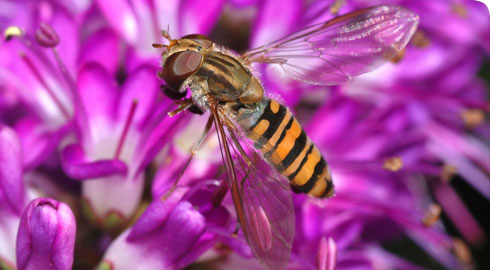Episyrphus balteatus (marmalade hoverfly)
Episyrphus balteatus (De Geer, 1776) is one of the most common, and distinctive hoverflies in the UK and throughout the Palaearctic region, which covers Europe, North Asia and North Africa.
It is small - approximately 10mm long - and has an orange parallel-sided abdomen with narrow black bands.
Hoverfly larvae are aphid predators - they are important biological control agents of aphid pests occurring on crops.
Adult hoverflies are beneficial as flower pollinators.
Each year in the UK, hoverfly numbers are greatly boosted by migrant flies from further south - they sometimes arrive in exceptional numbers.
Species detail
-

Taxonomy
Find out more about E. balteatus’ relationship to other hoverflies.
-

Biology
Marmalade hoverfly larvae normally feed on aphids but can sometimes be cannibalistic. One fly can devour 200 aphids during its development. Find out more about this fly’s eating habits and reproductive cycle.
-

Behaviour
This fly migrates to the UK in favourable winds, and incoming swarms can cause alarm. Find out more.
-

References
Get more information on E. balteatus.
Images
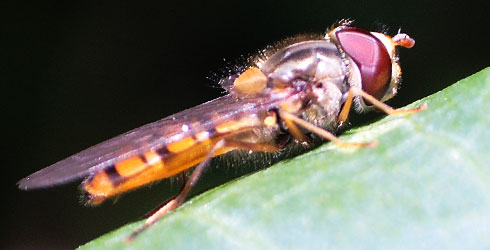
Episyrphus balteatus.
© www.photography.gordonengland.co.uk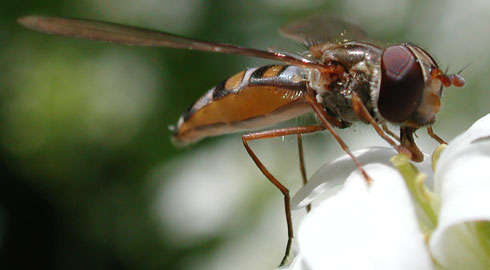
Episyrphus balteatus.
© www.gardensafari.net, all rights reserved
Episyrphus balteatus.
© www.photography.gordonengland.co.uk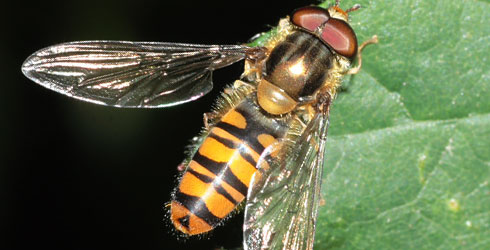
Episyrphus balteatus.
© www.photography.gordonengland.co.uk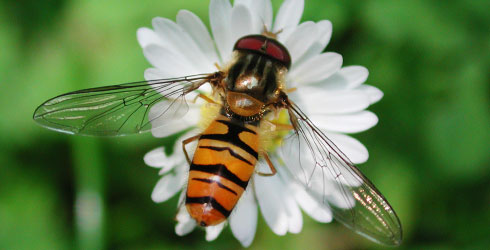
Episyrphus balteatus.
© www.gardensafari.net, all rights reservedAuthor
Nigel Wyatt
Curator of Diptera, Department of Entomology.
Author's quote
"This is one of the most familiar and recognisable hoverflies in Europe, it is beneficial to people and has interesting migratory habits."
